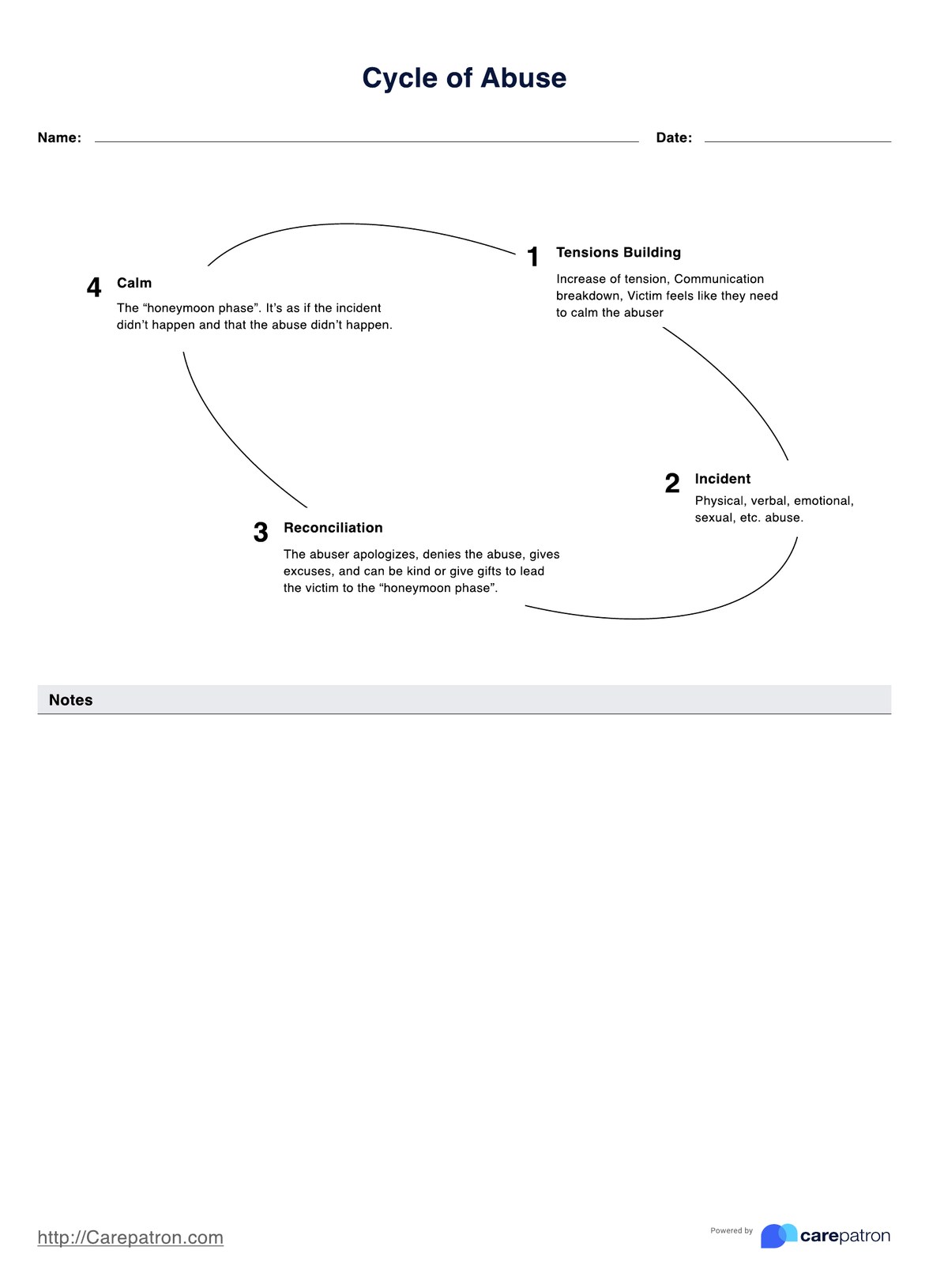Generally, mental health practitioners are the ones who use the abuse cycle wheel during their therapy sessions.

Help your patient identify potential abuse patterns in their relationship with the abuse cycle wheel. Click here for a free copy of the resource.
Generally, mental health practitioners are the ones who use the abuse cycle wheel during their therapy sessions.
Practitioners who provide therapy for victims and survivors of abuse may use the abuse cycle wheel during their sessions or when they suspect their patient is on the receiving end of abusive behavior.
The abuse cycle wheel template we created can be used as a reference, an educational resource, or a document on which one can write notes on.
EHR and practice management software
*No credit card required
Free
$0/usd
Unlimited clients
Telehealth
1GB of storage
Client portal text
Automated billing and online payments